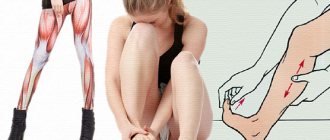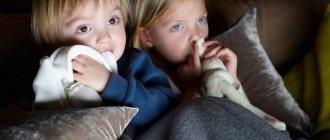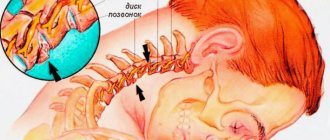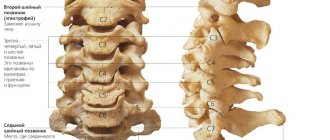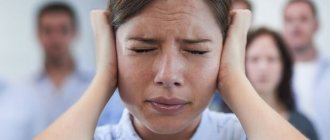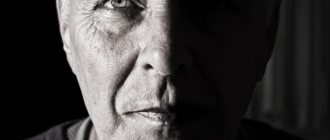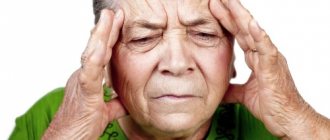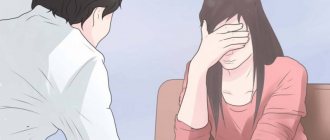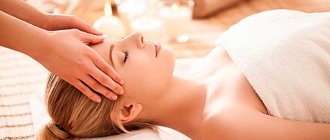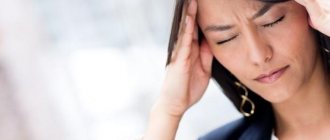Severe headaches, loss of energy and bad mood are all symptoms of an unpleasant disease called migraine. If you have encountered this, then you probably know that finding a solution to this problem is quite difficult. Migraine prevents us from living fully and completely cancels out all our plans for the day.
In this article from Elgreloo.com you will learn about what migraines are and what their symptoms are, what are the causes of severe headaches and how to get rid of them.
Symptoms and causes of migraine
The main symptoms of migraine include attacks of recurring intense headache. But the disease, as a rule, is not limited to this. Migraine symptoms also include nausea, often accompanied by vomiting. Patients are irritated by bright lights and loud sounds.
Migraine is hereditary, but it affects mostly women. Some of them note a clear connection with menstruation. The disease usually appears at a young age (17-30 years), but is no exception for children and adolescents.
The cause of migraine headache is associated with changes in the tone of the arteries of the dura mater. In other words, migraine can be characterized as damage to the arteries of the brain, manifested by stages of spasm and swelling of the vascular walls.
The branches of the trigeminal nerve are involved in the pathological process. As a result, biologically active substances such as serotonin are released, causing swelling and inflammation.
In most cases, migraine begins with precursors such as lethargy, loss of appetite, drowsiness or euphoria. In approximately 35% of cases, a migraine attack begins with an aura (visual disturbances that affect only one half of the visual field.
There is a feeling of “crawling”, tingling and numbness in the tongue, arm and leg, or weakness in the limbs on only one side of the body and speech disorder). The aura occurs 30-60 minutes before the attack develops.
Quick methods to eliminate pain
Migraine headaches can be quickly relieved; the remedies described below completely eliminate the problem or reduce the severity of the symptoms:
- As soon as the warning signs of a migraine attack begin, you need to drink coffee so that the caffeine can dilate the blood vessels that begin to narrow.
- Analgesics can be used as first aid, but if there are characteristic symptoms of migraine, throbbing temporal pain appears, then the medications will not give a positive result.
- You can significantly improve your condition with a contrast shower. With the help of this temperature effect, the vascular system comes into tone.
- You can take sedatives to help at the onset of an attack.
- To alleviate the condition, it is recommended to massage mortars, where there are many points that are connected to the brain and other internal organs. A similar effect is achieved with a head massage.
- The simplest method of relief is to take a horizontal position, turn off the lights in the room and remove extraneous sounds. Stay in position until the pain goes away or try to sleep; there should be no symptoms after waking up.
- Heat is often used to stop the attack. You can use heating pads on your feet or simply immerse yourself completely in the bath. The method is effective if the migraine is not complicated and the patient does not have pathologies of the cardiovascular system.
- A cold compress applied to the forehead for 15 minutes helps quickly. A similar effect is achieved with the help of menthol ointment, which is rubbed into the forehead and temples, after which a scarf is tied on the head.
Migraine can cause serious consequences that not only threaten a person’s health, but also his life.
In such a condition, it is imperative to take measures on your own or with the help of a doctor, which would be preferable. If the condition worsens significantly and quickly, you should call an ambulance.
Provoking factors
Despite the fact that migraine is genetically predetermined, its attack can be triggered by exacerbation of chronic diseases, traumatic brain injury, alcohol consumption (especially red wine), and excessive addiction to drinks containing caffeine (coffee, tea).
Perhaps no disease has such a wide range of foods that can cause an attack. At the same time, the “grocery set” is individual for each person. Here you can find cheese, nuts, chocolate, citrus fruits, bananas, chicken liver, salted smoked products, smoked meats and even yoghurts.
A clear connection with migraine attacks has been established only in relation to red wine. In addition, migraine needs to be “fed” on time and regularly, since it does not like hunger and snacking on the go.
The group of provoking factors includes physiological hormonal changes (menstruation, ovulation), as well as changes caused by taking oral contraceptives, estrogen replacement therapy, sleep disturbance (both lack and excess), physical activity and fatigue, changes in weather conditions, bright or flickering light, noise or loud sounds, being at heights, smells (perfumes).
“Migraine is a “capricious” disease, and if you do anything wrong, it will immediately manifest itself. Therefore, people suffering from this disease should be especially vigilant and try to prevent an attack, which is not always easy to relieve.”
Any migraine attack goes through several stages, each of which has its own characteristics.
The prodromal stage occurs several hours, sometimes a day before the attack. Clinical precursors appear: mood changes, drowsiness, decreased concentration, difficulty in thought processes, increased sensitivity to smells and sounds, dizziness, decreased appetite.
All symptoms are nonspecific, and it is difficult to establish a clear relationship between them and the subsequent attack.
A typical symptom is a unilateral headache, which is usually localized in the frontotemporal or orbital region. The pain may initially be dull, but then becomes throbbing and limits the patient's activity.
The attack lasts from 4 hours to 3 days, and the pain can move from one half of the head to the other or be bilateral. Autonomic disorders are also observed (dizziness, lightheadedness, feeling of shortness of breath, palpitations, chills or a feeling of heat, pallor or severe redness of the face).
These manifestations often lead to vegetative-vascular crises or a panic attack, which is called “panic” migraine.
In half of the cases, the end of the attack ends in sleep, followed by the postdrome stage, characterized by weakness and weakness. However, there are also paradoxical states after an attack in the form of euphoria, increased intellectual and physical activity.
Massage
Massaging the head is not only a way to get rid of migraines during an attack, but also an excellent preventive measure. It's good if someone else does it, but you can do it yourself:
- Take a comfortable position, even out your breathing and calm down.
- Massaging the scalp in a circle, go over it first clockwise, then counterclockwise.
- Divide your hair into partings and stroke each of them with your fingertips, then massage in a circular motion.
- Select strands of hair and pull them lightly until you feel a slight pain.
- Walk over your scalp using tapping movements.
- Squeeze your cheeks with your palms and pull them towards your temples and back.
- Massage the back of your head from top to bottom and vice versa.
- Throw your head back and gently massage the sides of your neck.
It is very important to see a doctor in time. Frequent headaches are already a reason to go to the clinic.
Types of migraine attack
The manifestations of migraine are so numerous that it is not possible to describe every case. Let's look at the most common ones.
Simple migraine
More than 50% of all forms are of the migraine type without aura and last from several hours to 3 days. During a headache attack, there must be at least one of the following symptoms: nausea or vomiting, photophobia or sound sensitivity.
Acute migraine and migraine with prolonged aura
It can exhaust the patient for several days.
Ocular or retinal migraine
It manifests itself as atrial scotoma (blindness), a fairly common phenomenon. With this form, headache rarely makes itself felt. The main symptoms are visual disturbances, although this has nothing to do with eye diseases. Possible lacrimation.
Instead of a clear image, they see a “blind” spot that can move and change its size. Flickering, zigzags, and lightning in the blind spot are diagnostic criteria for this form of migraine.
Basilar migraine
It begins in childhood or adolescence, more often in girls, affecting the brain stem and cerebellum.
Its symptoms are flashes of light, double vision or blindness in both eyes, lasting from 5 minutes to an hour, tinnitus, dizziness, constantly changing intensity and location of headache, fainting, problems with coordination of movements and articulate speech, headache starting in the occipital region, accompanied by vomiting.
Hemiplegic migraine
A condition when a migraine attack is accompanied by transient weakness of the limbs, usually on one side.
Cervical migraine
It occurs in both adolescents and adults. It is characterized by one-sidedness, pain that can be tolerated, and involvement of the shoulder, arm, and neck muscles.
Abdominal migraine
More typical for children. It manifests itself as frequent paroxysmal abdominal pain, which can end in an hour or can last up to 3 days. Between attacks, children feel absolutely healthy and do not complain about anything.
Complications
Migrainous status
A condition in which an attack lasts for more than 72 hours, or several attacks quickly follow one another.
Migraine cerebral infarction
Development of stroke in a patient with a long-term history of migraine attacks, confirmation of acute cerebrovascular accident using CT or MRI.
Epileptic seizures
Caused by migraine, it develops during or within an hour after a migraine aura.
“If you have a recurring headache, you must definitely contact a neurologist, who will prescribe medications to relieve the attack and preventive treatment.”
Diagnosis of migraine
The diagnosis is made clinically - a survey, examination. Migraine attacks may be the first symptoms of a brain tumor, a disorder in the development of the circulatory system.
You will also have to visit an ophthalmologist (check visual fields, visual acuity, fundus), do electroencephalography, computed tomography or magnetic resonance imaging, Doppler examination of extra- and intracranial vessels.
What is migraine
The mechanism of occurrence of this disease remains not fully understood.
Currently, there are a number of assumptions about the causes of the disease. It is possible that patients may have different prerequisites. It is also possible that several factors can influence simultaneously. In general, this concept includes a characteristic clinical picture. The disease cannot be cured. But modern drugs successfully stop attacks and maintain a long-term state of remission.
This disease is not progressive. For most patients, relapses occur less frequently with age, and the duration of attacks shortens. In the remaining group, manifestations remain at the original level. In women, the development of illness often occurs during puberty, and the decline in the peak of exacerbation is associated with menopause.
How to get rid of migraines at home
“It is difficult to cure migraine, and in other cases it is simply impossible. Only 10% of patients manage to achieve complete cessation of attacks. Treatment of migraine is associated with certain difficulties, the essence of which lies in the individual selection of drugs. The main goal of treatment is to relieve an attack and prevent subsequent ones.”
The best way to cope with an attack is to stop it when there is no headache as such yet, but its precursors have already appeared. At this moment you can try to sleep. However, it happens that the head begins to hurt during sleep. The patient feels better in a darkened, quiet room.
Many people benefit from general pain medications if they are taken before the onset of pain. It is often possible to relieve pain with the help of non-steroidal anti-inflammatory drugs ( acetylsalicylic acid, ibuprofen, naproxen ).
Patients, as a rule, note that antispasmodics ( no-spa ) or combination drugs ( spasmalgon, citramon, askofen, pentalgin, sedalgin ) not only do not give the desired effect, but in most cases they also aggravate the condition.
In mild cases or with pain of moderate intensity, a positive effect can be achieved by taking analgin, paracetamol . To speed up the onset of action, drugs are used in soluble form.
Special anti-migraine medications have been developed in the form of tablets and suppositories, which are very helpful in the middle of an attack. If there is vomiting, it is better to use suppositories in treatment. However, potent medications have their drawbacks: they are expensive, effective only for certain types of migraine, and are contraindicated for hypertensive patients and those suffering from coronary heart disease.
“Treatment of the disease depends on the severity, frequency of attacks, their duration and manifestations of the disease”
There is a stepwise approach to treatment. If signs indicating the onset of a migraine attack appear, or at the onset of the disease, you should take an analgesic or non-steroidal anti-inflammatory drug.
To ensure proper absorption and not provoke vomiting, it is recommended to combine the analgesic with drugs such as metoclopramide (Cerucal), domperidone (Motilium) .
To enhance the analgesic effect of the analgesic, it can be combined with caffeine, which is taken in the form of coffee, tea, cocoa, or you can use a ready-made combination product ( Askofen-P ).
If 45 minutes after taking the analgesic the intensity of the headache does not decrease, proceed to the second step - taking drugs of a new generation - triptans ( sumatriptan, imigran, sumamigren, zomig, naramig ).
New generation drugs can be taken not only in tablets, but also administered subcutaneously or intranasally. Triptans are used to relieve moderate to severe attacks.
Ergot medications ( ergotamine, dihydroergotamine, digidergot nasal spray, nomigraine ) are also effective, especially in patients with a clearly defined prodromal phase. If it is impossible to take the medicine due to nausea and vomiting, then you should use the drug in rectal suppositories.
To treat status migraine, drugs are used in parenteral forms: intramuscularly, intravenously. Considering the severity of the patient’s condition, the possible presence of complications, side effects of medications, relief of the status must be carried out under the supervision of a doctor and, best of all, in a specialized medical institution.
Among the drugs used for prevention, the most effective are anaprilin, propranolol , anticonvulsants ( topiramate, sodium valproate ), antidepressants ( Prozac, Cymbalta, amitriptyline ), calcium channel blockers (nimodipine, Corinfar, Cordaflex).
These drugs are recommended to be taken long-term (about 6 months or even more) to achieve a stable reduction in the frequency, severity and duration of attacks.
“The use of medications does not mean a cure for migraine, since it is incurable in itself. But in cases where unbearable headaches develop frequently and cause a significant deterioration in the quality of life, the use of preventive medications can reduce the number of attacks to a minimum, which for such patients is tantamount to healing. Of course, only the attending physician should select medications; there can be no talk of any self-medication.”
All patients need medications to relieve pain during an attack. But prophylactic medication is indicated only for those patients in whom attacks recur more than two or three times a month and are very severe, disrupting the patient’s daily activities.
Traditional medicine tips
Traditional medicine has not stood aside either; it offers its own ways to get rid of migraines at home.
- As soon as the attack begins, wet a large towel with cold water and wrap it around your head. This will be a kind of cooling compress, which needs to be kept for at least an hour.
- At the aura stage, strong black or green tea brewed with raspberry leaves and branches helps wonderfully.
- Many people find relief from headaches by applying a cut onion to their temples.
- Literally one drop of essential oil of lemon balm, mint, or lemon can significantly alleviate the condition if you lightly lubricate your temples with it.
- On the side of the head where the painful migraine attack began, you should apply a fresh lemon peel, peeled from the pulp, to your temple.
- Oregano infusion relieves headaches. You can prepare it in the following way: pour two tablespoons of dry herb with a glass of boiling water and leave for an hour. Before drinking, you need to strain the infusion and drink one glass at a time. In total, you need to take the medicine three times a day.
- You can cool off the heat of illness with ice cream. Every time you put a spoonful of ice cream in your mouth, you should hold it until it melts and only then swallow.
- If certain places on your head hurt, it is recommended to apply fresh cabbage leaves to them for an hour and a half.
- For troubling migraine attacks, people recommend drinking 50 grams of fresh potato juice. This method must be repeated every time alarming symptoms begin.
- It is very useful to take one tablespoon three times a day of valerian decoction. The crushed root of the plant (one tablespoon) is poured with a glass of boiling water and simmered for 15 minutes in a water bath, after which it is infused for another hour. After cooling and straining, the infusion can be consumed.
While fighting the disease, people are finding newer and more effective treatment methods. But the psychological factor still remains the main weapon against migraine. Don’t let the disease control you, learn to control the oncoming attacks yourself and get rid of them instantly.
Non-drug treatment
To ensure that migraines bother you as little as possible, I advise you to lead a healthy lifestyle, alternate work with rest, and do not neglect walks in the fresh air. But it is better to avoid places such as pine forests: the smell of resin from coniferous trees can provoke illness.
Prevention of migraine consists of eliminating provoking factors, especially dietary ones; alcohol load and caffeine consumption should also be reduced.
During an attack, you need rest in a quiet, warm, darkened room with sufficient fresh air. Light massage of the head and collar area, points of the auricle, acupuncture, warm or cold headbands are allowed.
Physiotherapeutic effects are indicated (electrophoresis with drugs, diadynamic currents, ultraviolet irradiation, magnetic and laser therapy of the cervical-collar area, mud applications, radon baths, circular shower).
For some patients, at the time of an attack, the pain is partially reduced by either a hot heating pad or an ice pack applied to the head. Hot influences are effective during the phase of vasospasm, cold influences are effective during the period of expansion.
What prevention methods are needed?
Since migraine attacks are often associated with an unhealthy lifestyle and the intake of certain foods, it is recommended to: establish a routine and exercise. It is necessary to exclude from the diet foods such as nuts, chocolate, carbonated drinks, alcohol and smoked foods. The cause may be not only certain foods, but also hypoglycemia that occurs due to the fact that a person does not eat on time.
A person may experience an attack due to various factors. If you identify them, you can reduce the number of migraine attacks to 1-2 per year. For each patient, the factor that provokes the attacks is individual, so it is necessary to study the circumstances that led to the development of the attack and exclude them, if possible.
Migraine attacks triggered by weather changes or associated with the menstrual cycle in women have been observed. By the way, dyshormonal disorders can also cause migraines, and this confirms successful treatment by influencing the body’s hormonal levels.
A migraine attack can begin at any time of the day, so it is recommended that such patients notify employees about their condition. Well, if it was not possible to prevent its development, then you need to return home, go to bed, and you can be treated not only with medications, but also with folk methods.

